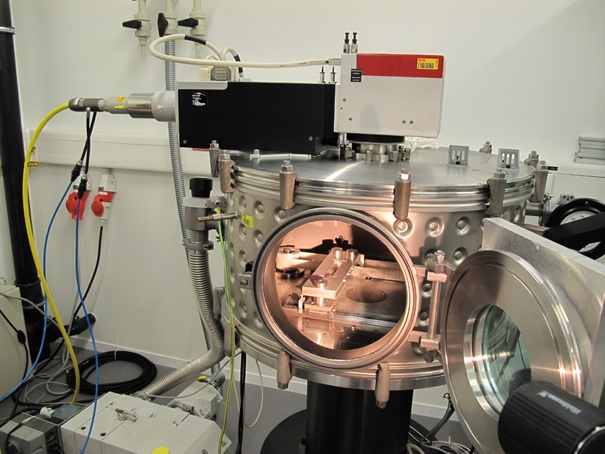Laser Powder Bed Fusion (LPBF) is an additive manufacturing process in which the part is built layer by layer out of a metallic, ceramic or polymer powder. One of the biggest advantages of the LPBF process is the ability to build parts with very complex geometries (lattice structures, conformal cooling channels, small features, etc.)
The LPBF station at LMTM focuses on experiments to better understand metallurgical and physical aspects of the process (very high heating and cooling rates inducing residual stresses, influence on grain structures, precipitation, phase transformations, size effects, porosities, anisotropic properties).

It allows easy adjustment or change of all elements (laser, scanning head, deposition system, sensors,…). A primary vacuum chamber avoids unwanted reactions with the atmosphere and can reach a level of oxygen of 10 ppm.
It is currently equipped with a 500W fiber laser and a 3-axis scan head. Preheating of the powder up to 300°C is possible, to ensure good building of the first layers. It is also coupled with a nanosecond LSP laser.
Online monitoring of the melt pool from the infrared back reflection is available, as well as acoustic sensors able to detect cracks and defects.
The building is possible on two different build plates sizes (10 cm and 3 cm diameter). The small one is dedicated to expensive powders and allows working with as little as 10g of powder.
The investigated materials range from usual materials like steels (stainless steel 316L, maraging steel 18Ni300), bronze (CuSn8), titanium based alloys (Ti6Al4V) and nickel based alloys (Inconel 718, CM247LC) to precious metals (red gold 5N), Bulk Metallic Glasses (ZrCuAlNb, PdCuNiP) and High Entropy Alloys (PtPdRhIrCuNi).